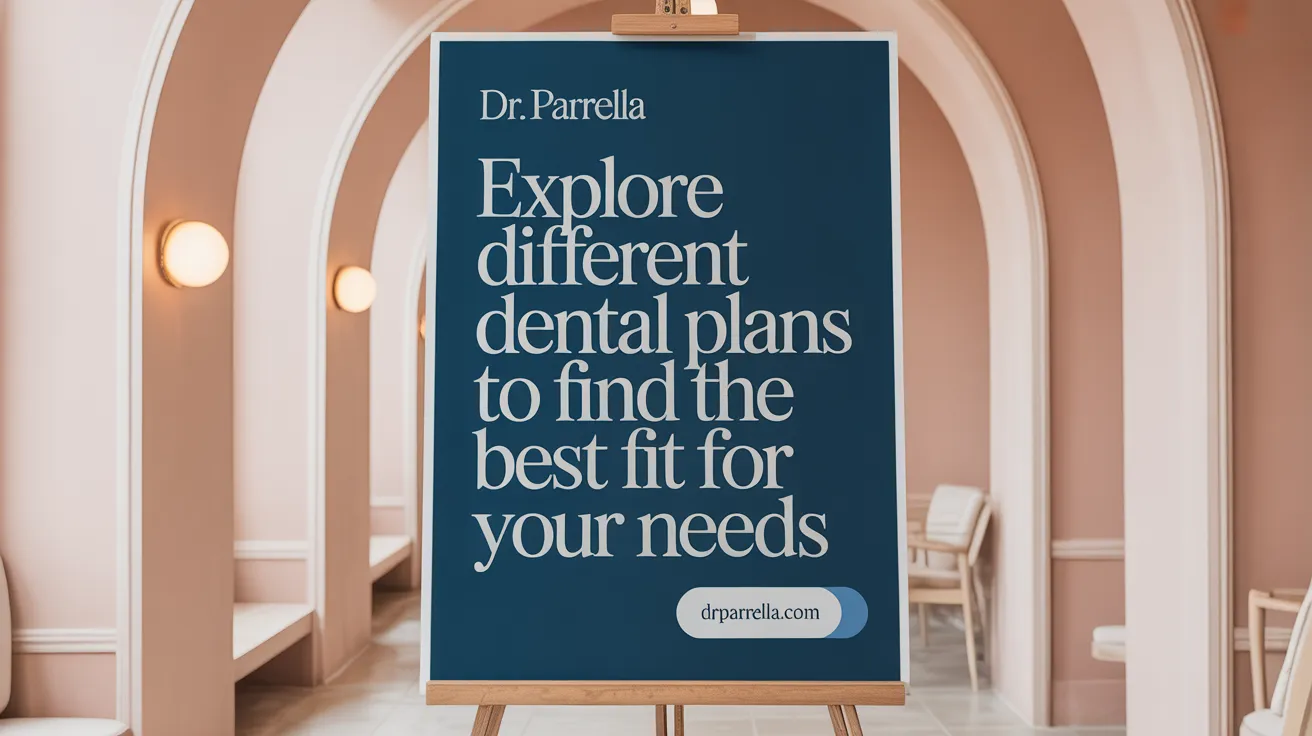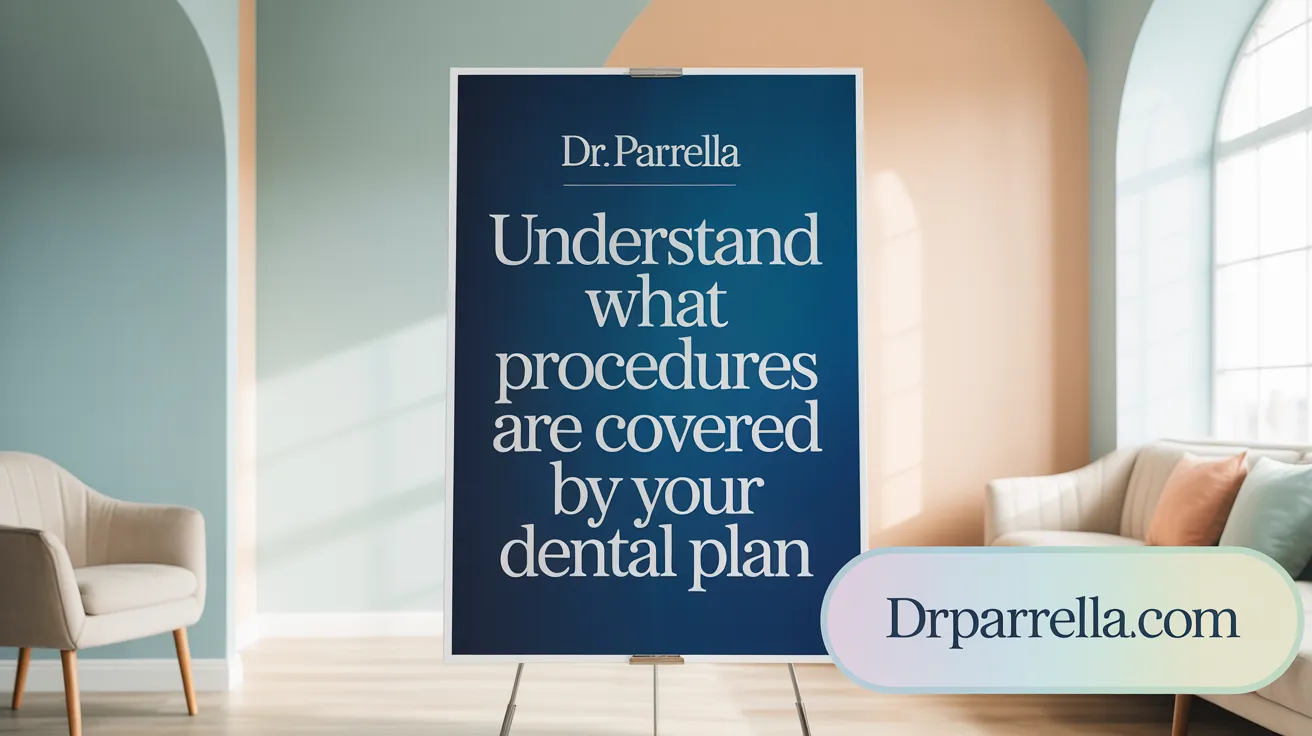Navigating the Complex World of Dental Insurance
Dental insurance is a crucial tool that helps millions of Americans access affordable dental care, yet it often seems complicated and confusing. With approximately 87% of the U.S. population carrying some form of dental benefits in 2024, understanding how dental insurance works, the types of plans available, and what is covered is essential for making informed decisions and maximizing your benefits. This guide breaks down the essentials of dental insurance coverage to empower you in choosing and using your plan effectively.
The Basics of Dental Insurance Coverage

What is dental insurance?
Dental insurance is a contract between a policyholder and an insurance company that helps cover the costs of dental care for your teeth and gums. This insurance aims to reduce your expenses when you need dental treatments, making dental care more affordable and accessible. See Dental insurance overview.
How dental insurance reduces out-of-pocket costs
By paying a monthly premium—often deducted from your paycheck if insured through an employer, or paid directly if you buy an individual plan—you gain coverage for a range of dental services. These include preventive care like cleanings, exams, and X-rays, basic treatments such as fillings and tooth extractions, and more extensive restorative procedures like crowns and dentures. Though you share some costs, insurance helps lower the amount you pay out-of-pocket. Learn more about how dental insurance lowers out-of-pocket costs.
Common dental insurance terms
- Premium: The regular monthly fee you pay for dental coverage.
- Deductible: The amount you must pay yourself before your insurance starts covering treatment costs.
- Coinsurance: The percentage of the dental costs you share with the insurance after the deductible is met.
- Annual Maximum: The yearly dollar limit your dental plan will pay; after reaching this, you pay all remaining dental expenses.
Most plans cover 100% of preventive services, 80% of basic procedures, and 50% of major restorative care, but exact coverage depends on your specific policy. See the Glossary of Dental Insurance Terms for detailed definitions and Dental insurance coverage details.
Types of Dental Insurance Plans and Their Features

What are the main types of dental insurance plans?
There are four primary types of dental insurance plans: Dental Preferred Provider Organizations (PPOs), Dental Health Maintenance Organizations (DHMOs), indemnity plans, and discount dental plans.
How does each plan type work and differ?
- Dental PPOs provide the most flexibility, allowing members to see any dentist but offering higher benefits and lower costs when using in-network providers. They typically cover preventive care fully, with partial coverage for basic and major procedures.
- DHMOs involve a network of contracted dentists paid on a capitation basis. Members usually need to select a primary care dentist and must use in-network providers to receive coverage, often paying fixed copayments rather than coinsurance.
- Indemnity plans, also known as traditional insurance, let patients choose any dentist. Reimbursements are based on a percentage of the dentist's fee for each procedure, and patients often pay upfront and then get reimbursed.
- Discount dental plans are not insurance but membership programs. They offer reduced fees from participating dentists paid directly by patients, with no claims or reimbursements involved.
What about network restrictions and choices?
- PPO plans have extensive networks but allow out-of-network visits at higher costs.
- DHMOs restrict coverage to network dentists only.
- Indemnity plans have no network restrictions.
- Discount plans require using a network to gain reduced prices but do not offer insurance benefits.
How do cost structures including premiums and copayments vary?
- PPOs usually carry higher premiums but offer coinsurance payments after deductibles.
- DHMOs often have lower premiums with fixed copayments and no deductibles or annual maximums.
- Indemnity plans tend to have higher premiums and variable out-of-pocket costs based on dentist fees.
- Discount plans have low membership fees with payment per service at discounted rates.
These differences make it important to consider your dental needs, budget, and preference for provider choice when selecting a dental plan. For more details, see Types of dental insurance plans.
What Dental Insurance Typically Covers

What dental procedures are generally covered by dental insurance?
Most dental insurance plans follow a coverage structure commonly referred to as 100-80-50 dental insurance coverage model. Preventive care—including routine cleanings, exams, and X-rays—is typically covered at 100%, encouraging regular dental visits and helping detect potential health issues early.
Basic care generally includes procedures like fillings, simple tooth extractions, and gum disease treatments, and is covered at about 80%. These treatments address common dental problems and are vital to maintaining good oral health.
Major procedures such as crowns, bridges, dentures, and dental implants often receive coverage at approximately 50%. These treatments are more complex and costly, thus the lower coverage percentage and sometimes waiting periods before benefits apply.
Orthodontic treatments, such as braces and Invisalign, are usually excluded from standard adult dental plans but may be included in certain group plans or offered as separate riders. When covered, there is often a lifetime maximum limit on these benefits. For more information on orthodontics coverage see related resources.
Cosmetic procedures—like teeth whitening, veneers, and bonding—that focus on appearance rather than medical necessity are typically excluded from dental insurance coverage. For details on cosmetic dental procedures coverage refer to these resources.
This coverage structure helps balance affordable premiums with assistance for essential dental care, supporting overall health and preventing more expensive dental issues later on.
Cost Factors and Financial Considerations in Dental Insurance

What costs are involved in dental insurance plans and how do they affect coverage?
Dental insurance plans involve several types of costs that influence both coverage and your out-of-pocket expenses.
-
Premiums: These are monthly payments you make to keep your dental insurance active. Premiums vary depending on the plan type, provider, and coverage level. For more detail on Dental insurance premiums.
-
Deductibles: This is the amount you pay yourself before your insurance starts to cover dental services. Typically, you pay deductibles once per benefit year. Learn about Deductibles in dental insurance.
-
Copayments and Coinsurance: After deductibles are met, you share the cost of dental procedures. Copays are fixed fees per service, while coinsurance is a percentage of the treatment cost. Commonly, preventive care is covered at 100%, basic procedures like fillings or root canals at 80% coinsurance, and major treatments such as crowns or dentures at 50%. See Coinsurance in dental plans for more.
-
Annual Maximum Benefit Limits: Most plans cap the total amount they will pay for dental care in a year, often between $1,000 and $1,500. Once reached, you are responsible for all additional costs during that year. Explore details on Annual Maximums in dental insurance.
-
Waiting Periods: Many insurance plans require waiting periods up to 6 to 12 months before covering major restorative or orthodontic treatments. Preventive services usually are covered immediately. Learn about Waiting periods in dental insurance.
-
Tax Credits and Flexible Spending Accounts (FSAs): To ease affordability, some families use tax credits for children’s dental insurance or leverage FSAs and Health Savings Accounts (HSAs) to pay dental expenses with pre-tax dollars. Read more about Managing dental costs with FSAs and HSAs.
Understanding these financial components can help you select a plan that aligns with your dental health needs and budget, minimizing surprise costs and maximizing benefits.
Understanding Dental Networks and Provider Choices
How do dental insurance networks affect provider choice and costs?
Dental insurance plans generally have a network of dentists classified as in-network or out-of-network providers. In-network dentists have contracts with the insurance company to provide services at negotiated rates, which usually results in lower out-of-pocket costs for patients. Conversely, out-of-network providers do not have such agreements and may charge higher fees, causing increased costs for patients and reduced reimbursement from insurance. For more details, see Dental insurance basics.
In-network vs. out-of-network providers
- In-Network Providers: Dentists who have agreed to the insurance plan’s terms and negotiated fees, offering benefits like lower copayments and coinsurance. Learn more about In-Network Dentist vs Out-of-Network Dentist.
- Out-of-Network Providers: Dentists without a contract, potentially charging full fees and leading to higher patient payments or partial insurance coverage. Additional insights available at Dental insurance network options.
How provider networks impact costs and coverage
Plan costs and coverage depend significantly on using in-network providers. Plans like PPOs offer flexibility by covering some costs for out-of-network providers, often at higher rates. On the other hand, DHMO plans usually restrict patients to in-network dentists and often require choosing a primary care dentist who coordinates care with limited or no out-of-network coverage. Read more about Types of dental insurance plans.
Primary dentist requirements in certain plan types
Dental Health Maintenance Organization (DHMO) plans commonly require members to select a primary dentist. This dentist manages all dental care and referrals within the network. This requirement helps control costs but limits provider choice compared to PPO plans. For details, see Dental HMOs explained.
Tips for choosing a dental plan based on network access
- Evaluate if your current dentist is included in the plan’s network. Use Tools to find local dentists.
- Consider the size and convenience of the network to ensure access to preferred providers. Information available at Dental insurance provider networks.
- For more flexibility in dentist choice, opt for PPO plans despite potentially higher premiums. Compare through Dental PPO coverage.
- If cost predictability is a priority and you prefer routine preventive care, DHMO plans may be suitable. More about DHMO dental insurance.
Selecting a dental plan with the right balance of network breadth and cost control maximizes coverage benefits and minimizes unexpected expenses. For comprehensive guidance on Choosing dental insurance and understanding Dental insurance coverage details visit the linked resources.
Public Programs and Dental Coverage Variations
How do public programs like Medicaid dental coverage and Medicare dental coverage affect dental coverage?
Public programs play a significant role in dental coverage access, especially for children and seniors. Medicaid offers comprehensive dental services for children under the Early and Periodic Screening, Diagnostic, and Treatment (EPSDT) program. This coverage includes preventive care, restorative treatments, and other necessary dental services.
Adult dental coverage under Medicaid, however, varies significantly by state. Some states provide a broad range of dental services for adults including preventive, restorative, and emergency care, while others offer only limited or emergency dental benefits. For instance, states like California and New York provide extensive coverage, sometimes exceeding annual caps if the care is medically necessary. Conversely, several states either limit adult dental benefits to emergency treatment only or do not provide adult dental coverage through Medicaid at all.
Traditional Medicare generally excludes coverage for routine dental care such as cleanings, exams, fillings, crowns, dentures, and implants. There are limited exceptions when dental services are provided as part of medically necessary hospital care. Because of these limitations, many seniors seek dental coverage through Medicare Advantage dental plans, which often include dental benefits. These plans offer an alternative means for seniors to obtain care including preventive services and sometimes major dental procedures.
Overall, state-by-state variation in Medicaid adult dental benefits creates unequal access, underscoring the importance of understanding specific program details in each state to fully evaluate available dental coverage options for low-income adults and seniors.
Maximizing Your Dental Insurance Benefits
How can you get the most out of your dental insurance benefits?
Maximizing your dental insurance benefits starts with focusing on preventive dental care, which dental plans typically cover at 100%. Regular dental visits, including cleanings, exams, and X-rays, are essential for early detection of problems, helping you avoid more costly treatments later on.
Before proceeding with significant dental work, it is wise to request a pre-treatment estimate or obtain preauthorization from your insurer. This step clarifies what procedures are covered, the extent of coverage, and what your out-of-pocket expenses might be, allowing you to plan accordingly.
After receiving treatment, carefully review the Explanation of Benefits (EOB) statements provided by your insurer. These statements detail what services were performed, how much the insurance paid, and what portion you owe. Checking for any errors or miscalculations ensures you're only responsible for the correct charges.
If a claim is denied, common causes include mistakes in coding, exceeding treatment frequency limits, or missing prior authorizations. Don't hesitate to appeal denied claims by submitting any necessary documentation or corrections. This increases the chances of reimbursement and reduces unexpected costs.
Lastly, managing your dental care within your plan’s annual maximum benefit and cost-sharing rules helps control expenses. Since most plans have yearly limits (often around $1,500) and use a 100/80/50 coverage model—for preventive, basic, and major services respectively—planning treatments wisely can stretch your coverage further and avoid surprise bills.
The Link Between Dental Insurance, Oral Health, and Overall Wellness
What is the value of dental insurance beyond coverage?
Dental insurance plays a critical role in promoting oral health by improving access to dental care. Individuals with dental benefits overview are nearly twice as likely to receive preventive dental services such as cleanings and routine checkups. This increased use of dental care reduces the occurrence of untreated dental conditions that can lead to severe complications.
How does dental insurance influence oral care usage and outcomes?
Dental insurance encourages regular dental visits and preventive care, which leads to better oral health outcomes and fewer restorative interventions like extractions or dentures. Those insured tend to attend dental appointments more frequently and obtain timely treatment, helping maintain a higher quality of oral health and dental insurance.
How does oral health impact systemic health?
Poor oral health has been linked to numerous systemic diseases. Studies have shown that individuals without dental coverage are significantly more prone to conditions such as heart disease, diabetes, and osteoporosis. Maintaining oral health through insured dental care can lower the risk and severity of these illnesses. The impact of dental insurance on health is therefore significant.
What role does preventive dental care under insurance play in healthcare costs?
Preventive dental care helps avoid complicated dental problems that could result in emergency room visits. Untreated oral diseases contribute to more than 2.1 million emergency room visits annually across the US. By encouraging regular dental checkups and treatments, dental insurance reduces costly medical emergencies and overall healthcare spending. The value of dental insurance includes such cost savings.
How does dental insurance support early detection of broader health issues?
Dental checkups provide a unique opportunity for early diagnosis of over 120 diseases, including heart disease and diabetes. Insurance coverage ensures patients receive regular oral exams where these health indicators can be identified sooner, prompting timely medical referrals and treatment, improving patient outcomes and potentially saving lives. Preventive dental care coverage promotes this early detection.
Making Informed Choices for Healthier Smiles
Dental insurance is more than just a financial product—it’s a critical resource for maintaining oral and overall health. Understanding the types of plans available, what procedures are covered, the costs involved, and how to navigate provider networks can help you select a dental plan that fits your needs and budget. Integrating public program options and maximizing your benefits through preventive care and informed use ensures that you receive quality dental care while managing expenses. Armed with knowledge about dental insurance coverage, you can confidently approach your dental health, contribute to your general well-being, and safeguard your smile for years to come.
